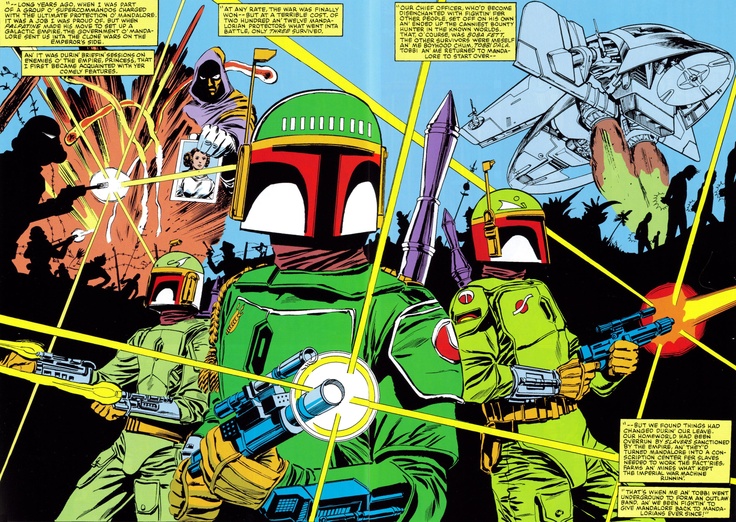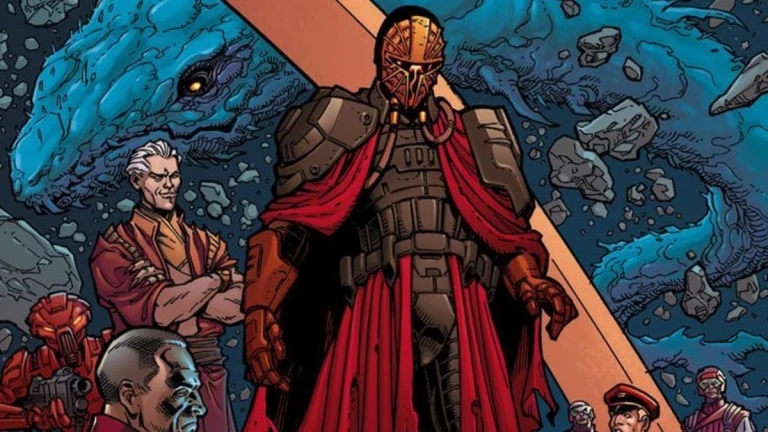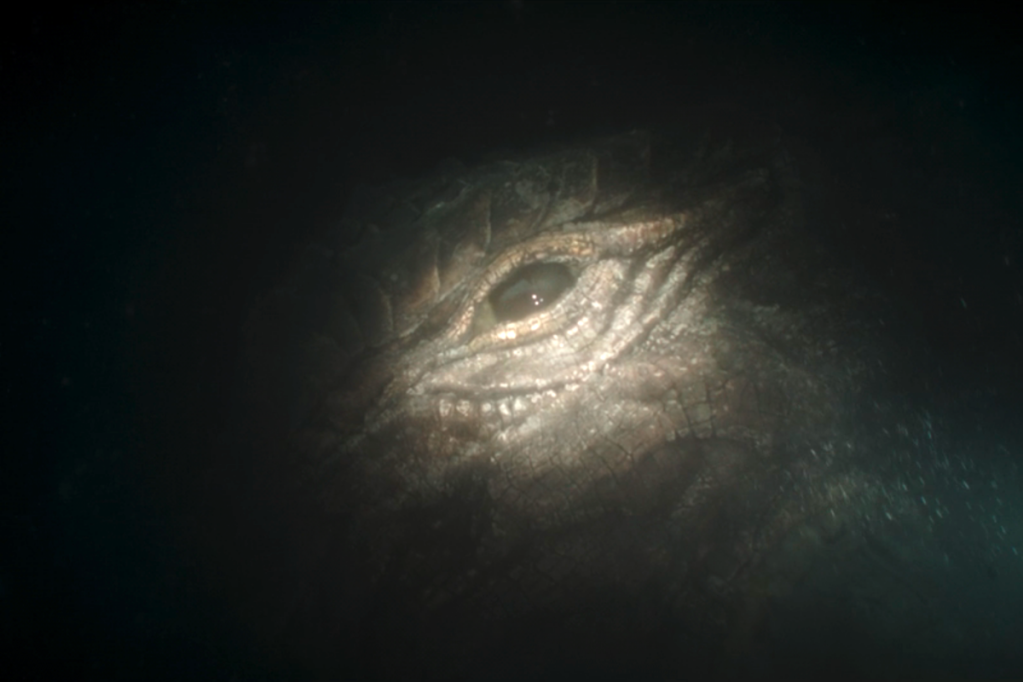There was a time, not so long ago, when only Star Wars diehards knew the term ‘Mandalorian’. Now, it’s a household word, thanks to Lucasfilm’s mega-popular Disney+ series, The Mandalorian. It’s enough to give casual fans the impression that the Mandalorians – a society of armour-clad warriors – are a relatively recent addition to Star Wars canon, however, the reverse is true. Mandalorians have been part of everyone’s favourite galaxy far, far away since The Empire Strikes Back arrived in cinemas back in 1980 (even if their name wasn’t uttered on-screen).
In the decades since then, the canon expanded to include a raft of Mandalorian-related characters, concepts, creatures, and worlds. Again, this happened mostly off-screen; Star Wars creator George Lucas largely left it to those in charge of the saga’s licensed media to develop the Mandalorians’ past, present, and future – including comics. Indeed, despite a steady stream of revisions (and even outright resets) of Star Wars continuity, a lot of what we know about Mandalorians has its roots in the comics. In short: no Star Wars comics, no Mandalorian – it’s as simple as that.

It all started with Marvel Comics. The House of Ideas cranked out licensed Star Wars comics in 1977 to coincide with the original trilogy’s debut entry, A New Hope, until 1986, three years after the trilogy wrapped with Return of the Jedi. During Marvel’s classic 107-issue Star Wars run, a host of writers and artists made considerable embellishments to existing lore, including to the Mandalorians and their backstory. In Star Wars #68, “The Search Begins”, writer-artist team David Michelinie and Gene Day took a single reference to the warrior race in The Empire Strikes Back’s novelization and ran with it, introducing the Mandalorian Protectors – an elite fighting unit who hail from the planet Mandalore.
This more or less tracks with our understanding of who the Mandalorians are in modern Star Wars canon, although the specifics of “The Search Begins” were later retconned. According to Michelinie and Day, the Mandalorians fought for the Empire in the Clone Wars. 2002 Star Wars prequel Attack of the Clones reveals they didn’t, although the clone army that did wore armour inspired by Mandalorian protective gear. In essence, Lucas combined his original idea for the Mandalorians – that they were Imperial super-commandos with a history of going toe-to-toe with the Jedi – with his newer conceptualization of how the Clone Wars played out. Sure, this didn’t quite line-up with “The Search Begins”, but it wasn’t too much for Lucasfilm’s continuity police to subsequently straighten out in fan magazines and guidebooks.
Star Wars #68 was also one of the first official sources to directly link iconic bounty hunter Boba Fett to Mandalore. Michelinie and Day have Fett as one of the Mandalorians who saw combat during the Clone Wars, which turned out to be true – even if (per Attack of the Clones) he was just a kid at the time. True, Lucasfilm has flip-flopped on the topic of Fett’s Mandalorian heritage over the last 15 years, but for a generation of fans, he wasn’t just a Mandalorian, he was the Mandalorian. And even if they didn’t know it, these fans had “The Search Begins” to thank for that.

Star Wars comics went on hiatus for half a decade after Marvel Comics’ licensing deal expired in 1986. The original trilogy was finished, audiences had moved on, and, to put it bluntly, all the money had seemingly been wrung out of the franchise. That changed in 1991 after Lucasfilm successfully revitalized the Star Wars brand with the first of what was to be many licensed novels, Heir to the Empire. Buoyed by the tremendous commercial success of Heir to the Empire, Lucasfilm enlisted Dark Horse Comics to produce a new line of Star Wars comics. Among the first titles published was Tales of the Jedi, a series that would – along with its litany of follow-ups – add some of the biggest (and, arguably, most enduring) additions to Mandalorian lore.
Tales of the Jedi was conceived primarily by writer Tom Veitch and artist Christian Gossett, with novelist Kevin J. Anderson assuming writing duties later in the series’ run. It was set thousands of years prior to the events of the Star Wars movies, which allowed, Veitch, Anderson, Gossett, and a whole bunch of other creators (you can look them up here) to define the history and culture of several factions – including the Mandalorians. Not only did Tales of the Jedi flesh out the previously teased Mandalorian/Jedi rivalry by teaming the Mandalorians with the Jedi Order’s evil counterpart, the Sith, but it also gave us a glimpse at what the warrior race’s ancient armour looked like. It even established what the Mandalorians call their leader: Mandalore (because of course they do).
Just as importantly, Tales of the Jedi would eventually inspire the incredibly popular Knights of the Old Republic video game franchise. These games and their associated tie-in media drew heavily from Tales of the Jedi canon, not least of all where the comics’ depiction of the Mandalorians was concerned. Notably, Knights of the Old Republic-related media expanded on the concept of Mandalorian society consisting of different tribes (themselves made up of different species) reduced to gun-for-hire status. It also coined the idea that being a Mandalorian has less to do with birth than it does with adhering to a set code of conduct. This was all great stuff – and none of it would exist without Tales of the Jedi.
Dark Horse Comics didn’t just dwell on the Mandalorians of long ago, though. The publisher issued various titles that chronicled the Mandalorians’ more recent history, too. Of these, perhaps the most notable was Jango Fett: Open Seasons, which revolved around the internecine feud between two rival Mandalorian outfits: Death Watch and the True Mandalorians. If Death Watch’s name is ringing any bells, it’s because they later went on to feature (directly and indirectly) in several recent Star Wars TV shows. Very recent, in fact.

First up was 2008 animated series Star Wars: The Clone Wars – the last addition to the franchise that Lucas directly contributed to before selling Lucasfilm to Disney in 2012. Together with supervising director Dave Filoni, Lucas decided to rethink the Mandalorians for their debut in Season 2, although they remained faithful to the overall gist of existing comic book lore. The Mandalorians still came from a planet called Mandalore, they were still formidable fighters, and they still had a history of bad blood with the Jedi Order. And while Lucas and Filoni downplayed the cross-species aspect of Mandalorian society, their inclusion of Death Watch was an effective tip of the hat to their propensity for tribalism and in-fighting.
This retooled spin on Mandalorians – itself informed by decades’ worth of comics – continues to this day, even outliving Disney’s near-total eradication of the Expanded Universe. The House of Mouse bestowed non-canonical “Star Wars Legends” status on everything other than the movies themselves – plus Clone Wars. The upshot of this is that everything that followed, including The Mandalorian, has built upon Clone Wars’ comics-infused portrayal of Mandalorian characters, history, and culture. Heck, The Mandalorian’s latest season even resurrected select aspects of Legends continuity dating back to the Marvel days, such as the legendary Mythosaur creature (as I previously wrote about for Polygon).
So next time you queue up an episode of The Mandalorian – or Clone Wars or The Book of Boba Fett, for that matter – remember: Star Wars comics walked so that these shows, and others like them, could run.
Agree? Disagree? Let me know in the comments below, or hit me up on X, Facebook, or Threads!
